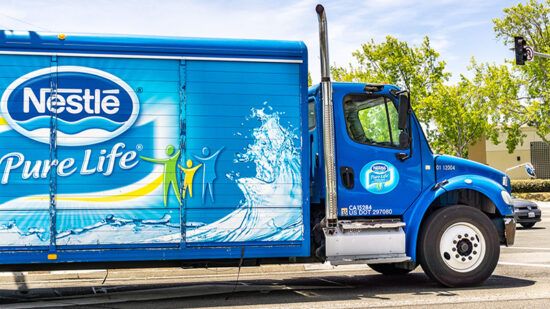The dystopian vision of androids cleaning our houses, replacing factory workers, performing healthcare duties until recently, has seemed to be just that – a futuristic fantasy with little grounding in reality.
But that is changing rapidly and coronavirus is accelerating the evolution of how robotics will shape society
If you’ve seen the 2004 Will Smith film I, Robot you’ll know that it‘s a subversive tale set in 2035, where highly intelligent robots fill public service positions. But dissent in the ranks breaks out, pitting servant robots against humans. Although that future might feel a lot further away than 15 years, in the last five years, robotics and artificial intelligence (AI) have started to play a more important role in our lives and trend watchers think that the impact on society will be significant.
Take a country like Japan. Suffering from stagnant economic growth and having the oldest population in the world, the Japanese have successfully harnessed AI and deep learning to solve social issues and create economic growth. The Japanese government has described a move towards ‘Society 5.0’ where everything and everyone is connected through technology. This is helping the country overcome problems posed by a depletion of labour resources; they are using robotics and AI to help fill that gap. And as the world’s population ages (according to the United Nations, by 2050, one in six people in the world will be over 65), more countries are likely to follow Japan’s lead.
AI, robotics and coronavirus
There is also evidence that our current situation will increase our use of robotics and AI. Recessions often lead to innovation and new ways of working. In 2008, there was a trend for businesses to examine their supply chains, which resulted in many moving their production offshore and also starting to introduce automation to the supply chain. But the coronavirus pandemic’s effect on global supply chains has made the issue of offshoring problematic, as borders have been temporarily closed and inter-country movement has been restricted and subject to further regulation and red tape. With concerns over vulnerable supply chains and the potential for infection of human workers, the covid-19 pandemic has spurred the uptake of robotics, automation and AI in the supply chain.
And it doesn’t stop there. There have been a number of studies to support the hypothesis that take up of automation and robotics is happening across lots of industries as a result of coronavirus. Consultancy firm, EY, recently conducted a study amongst almost 3,000 executives and found that 41% of respondents said they were investing in accelerating automation, as businesses prepared for a post coronavirus world. As the business world prepares to salvage jobs and limit the economic cost that this pandemic has wrought, executives accept that automation will play a big part in how to build their businesses for the future. To bear this out, since mid-April, the performance of the ROBO global robotics and automation index ETF, which tracks companies in the automation sector, has outperformed the S&P 500.
Is there space for humans too?
Although this trend has been in place for years, advances in robotics, automation and AI are likely to be the biggest developments we see in the next 10 or 20 years and beyond. They will be a source of incredible economic and societal disruption, solving problems with climate change, healthcare and education. These technologies are transforming the nature of work and the workplace too, as machines begin to carry out tasks currently conducted by humans, complement the work humans do and even conduct tasks that go beyond what humans do.
McKinsey, the global management consultancy, has predicted that “there will be enough work to go around, barring extreme scenarios, and society will need to grapple with significant workforce transitions and dislocation. Workers will need to acquire new skills and adapt to the increasingly capable machines that work alongside them.” Japan is making moves to adapt to this already and its education system is moving away from a ‘memorisation culture’ to a problem-solving culture – data literacy is even being introduced at elementary schools. Upskilling and reskilling our workforce needs to be a key consideration as we move forwards in the post Covid-19 world.
How widespread AI is becoming
Companies in lots of different industries are benefitting and becoming far more efficient as a result of AI. We are not just talking the usual IT and industrial suspects – the impact is apparent in many different areas. Think of the advances in drug discovery by pharmaceutical companies, the move towards algorithmic trading in financial institutions, or the online recommendation engines used by consumer brands – all are increasingly powered by robots. And it’s happening in households too.
See also: – Four ESG themes to watch amid global disruption
Amazon reportedly has 10,000 employees dedicated solely to its Alexa and Echo technology. And we all know how pervasive Alexa has been. Researchers have found that the number of baby girls named Alexa almost halved in 2018 compared to the previous year, with parents put off at the thought of calling for their baby daughter, but having Amazon’s virtual assistant respond. The robotics and AI trend is increasingly permeating our daily lives, so it stands to reason that the companies who will succeed in their respective sectors are the ones leveraging robotics and AI.
To date, the cost of investment in robotics and automation has been prohibitive for businesses. However, a new distribution model – like ‘Software as a Service’ (SaaS) where companies make their software available over the internet on a subscription basis – is also emerging in the robotics industry. This will offer better returns for robotics companies and won’t require big upfront investments from the purchasing companies. This combined with the strong financial incentive companies have to improve their bottom lines through automation and AI, will accelerate uptake of this trend.
The opportunity for ESG investors
The drivers of change are impossible to ignore and it’s a unique and incredibly exciting long-term opportunity for ESG investors, when you think about the social impact AI and robotics will have. In terms of accessing the theme, there are a number of active and passive funds investing in robotics and AI. L&G and iShares have ETFs which invest in this space. And Pictet, Polar Capital and Smith & Williamson have actively managed robotics, automation and AI strategies.
No one is quite sure what the world is going to look like post Covid-19. But you can rest assured that this theme is going to have a big role and for investors, it will be one that is worth keeping your eye on. The future is bright – the future is automation.








